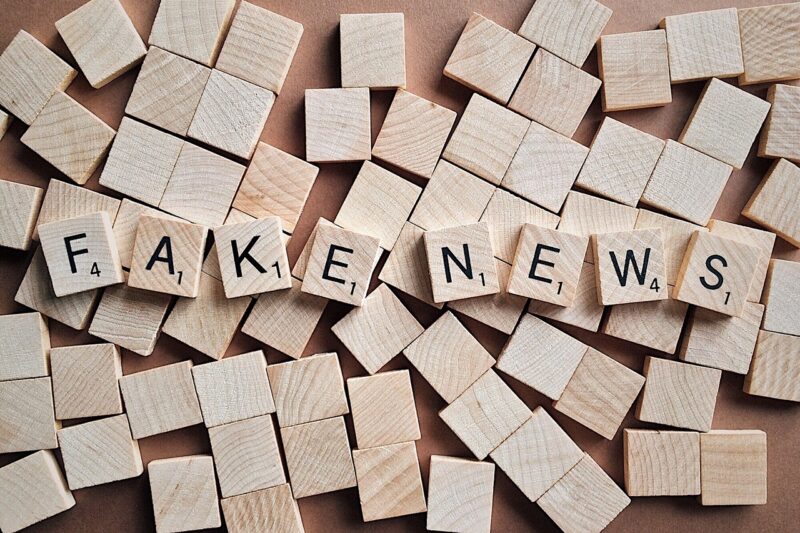How to Spot Fake News in a World Full of Misinformation
November 10, 2024

In today’s digital landscape, we are inundated with information from various sources, ranging from social media feeds to news articles and beyond. With the ease of sharing content online, distinguishing between genuine news and fake news has become increasingly challenging. Fake news can have dire consequences—it can influence public opinion, sway elections, and even affect personal beliefs. Thus, developing the skill to identify misinformation is essential for everyone.
1. Understanding Fake News
First, it’s important to define what fake news is. It generally refers to misinformation or disinformation that is presented as news but lacks credible sources or factual accuracy. Some types of fake news include:
- Satire and Parody: Humor sites like The Onion produce content that resembles news but is intentionally fictitious and meant for entertainment.
- Propaganda: Information that is specifically designed to promote a particular agenda or viewpoint, often exaggerating or distorting facts.
- Misleading Headlines: Headlines that misrepresent the content of an article, intending to capture attention and clicks without providing accurate information.
- Clickbait: Articles that use sensationalized titles and misleading thumbnails to entice readers to click on them, often leading to low-quality or unrelated content.
Being aware of these different forms of fake news can help you identify them in your daily media consumption.
2. Check the Source
One of the first steps in identifying fake news is evaluating the source of the information. Reputable news outlets adhere to journalistic standards and fact-checking protocols, making it less likely for their articles to contain false information. Here are tips on how to assess sources:
- Verify the Publication: Check if the article originates from a well-known and trusted news organization. A quick internet search can help you determine the credibility of the site in question.
- Look for About Us Pages: Reputable sites provide background information about their organization, including its mission, editorial standards, and who writes or reports for them.
- Investigate the Author: Good journalism typically involves credible authors. Check if the person who wrote the article is a recognized journalist or expert in the field. You can look for their other works, backgrounds, and affiliations.
Being vigilant about the source of information is paramount in the fight against misinformation.
3. Examine the Evidence
Another effective way to spot fake news is to examine the evidence provided within the article. Articles that report on facts and events should contain data, statistics, and references to credible sources. Here are guiding questions to ask:
- Are the Claims Supported by Data? Look for numerical data, statistics, or credible studies that underpin the claims made in the article. If the article refers to research, be sure to verify that research through another credible source.
- Are There Any Citations? Reliable news sources will often link to other reputable articles, studies, or reports to back up their claims. Check the links to ensure they lead to credible sources and not further misinformation.
- Is It Written Objectively? Articles containing biased language or sensationalist tone may not provide an accurate account of events. Good journalism strives for neutrality and provides a balanced perspective on the issue at hand.
Asking these questions will help you approach the information critically, enabling you to separate fact from fiction.
4. Cross-Verification and Fact-Checking
Cross-verifying information from multiple sources can significantly aid in verifying its authenticity. Follow these steps to ensure correctness:
- Use Fact-Checking Websites: Reputable fact-checking organizations like Snopes, FactCheck.org, and PolitiFact can assess the validity of claims and news stories. Always consider consulting these platforms whenever a headline raises doubts.
- Check Multiple Outlets: Look for the same news from different reputable sources. If multiple trustworthy outlets report the same story with similar facts, it’s more likely to be accurate than a unique story from one outlet alone.
- Evaluate the Date of Information: Fake news may often use outdated information, especially on ever-changing topics like politics or health. Ensure the information is current and relevant to the present context.
Cross-verifying facts will strengthen your understanding and empower you to make informed decisions.
5. Be Aware of Confirmation Bias
Confirmation bias is the tendency to search for, interpret, and remember information that confirms one’s pre-existing beliefs. This psychological phenomenon can lead to the disillusionment with information that contradicts our views. To prevent falling into its trap:
- Stay Open-Minded: Challenge your assumptions by seeking out diverse viewpoints. Engaging with opinions different from your own can provide valuable insights and a broader perspective of an issue.
- Practice Emotional Regulation: Recognize emotional responses to information and learn to take a step back. Strong emotional reactions can cloud judgement and lead to hasty conclusions.
- Engage in Thoughtful Discussions: Discuss topics with friends, family, or peers who may have varying opinions. Open conversations can help identify biases in your own thinking and promote understanding across differences.
By recognizing and managing our biases, we can become better consumers of information and avoid falling victim to misinformation.
Conclusion
In a world where misinformation spreads like wildfire, equipping ourselves with the tools to identify fake news is more important than ever. By understanding the nature of fake news, checking sources, examining evidence, cross-verifying facts, and recognizing our biases, we can shield ourselves from the harmful effects of misinformation. Remember, being a critical reader not only enhances our understanding but also contributes to a more informed and responsible society. Together, let’s stand against fake news and ensure that the truth prevails.







